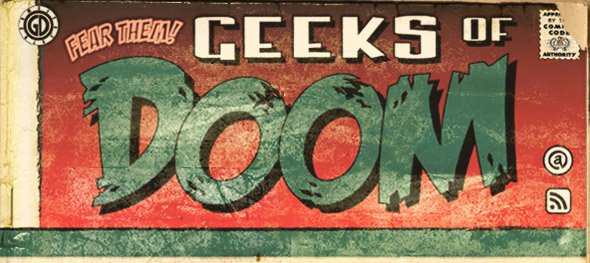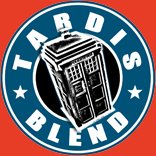
Disney is bringing back the animated talking animal movie in a big way that you have never seen “be-fur.” Zootopia will bring a whole new meaning to the term Animal Kingdom, that’s because in this world, there are no humans, and the city of Zootopia was built by the animals themselves. While there are some modern day designed buildings, other neighborhoods and sectors of the city are inspired by the various climates like Sarhara Square, Tundra Town, and the Rain Forest District.
Geeks of Doom was invited to join a group of journalists to sit down and talk with the various creative members of the team that helped put Disney’s latest film together. We’ve already talked about how the screenplay gets put together, and will post our sit down with the film’s directors Rich Moore (Wreck-It Ralph) and Bryon Howard (Tangled, Bolt). But before we get to that, we present to you our talk with art director Matthias Lechner, who has been with the project for over three years and whose past credits include Escape From Planet Earth and Space Chimps; and Lance Summers, head of environment look development, whose past credits include Frozen. Check out how these two designed a believable animal world that was created by animals.
Part of what makes Zootopia so special is that it is an animal world designed by animals, so Lechner and his team had to figure out what that means. So this entailed a lot of searching, which included looking at animals, animals in their natural environment, the shapes of the habitat, rock formations, and more. All of that research would influence the look and feel of the city. “John Lasseter is very keen on us doing a lot of research,” said Lechner. “Nothing is spared without good reason.”
He continued, “What we wanted for this city is to look like it has been there for a while, like it’s been lived in, it’s got garbage lying around, it’s got streets, it’s got trees, it’s got buildings of different kinds, of different architectures. Everything that a real city entails.”
Lechner then talked about how much of it could look like it was built by an animal, and how much of it would still have some sense of humanity. So it was a matter of finding the right balance of the human part of the elements and the animal parts. “There will never be a moment where the animals are entirely human, and there is never a moment where they are entirely animal,” said the art director.
As aforementioned, Zootopia is filled with different districts and different climate zones. It is designed to be a “world city” where animals from all around the world can interact with the various districts. “When you look at a building, the audience should know what human architecture that would be, and what kind of nature element it would represent, like a rock or maybe a horn or maybe a palm leaf.” Animal patterns were also included into the design of the city, which you will be able to see throughout the film.
Since there will be mammals of all different shapes and sizes, scale had to be considered into the design of the city. While there will be multipurpose buildings where all animals could interact with each other, there will be other buildings specifically designed for the certain animals. Train stations, police stations, and the DMV would be an example of where you could see all the animals of Zootopia interact.
Vehicle design was also important to get right, as a mouse wouldn’t be driving a car made for an elephant, nor would he sit in the same passenger sit as an elephant. So Lechner designed cars of all shapes and sizes, but had the all the animals sit in the same passenger train car. For example, looking at the passenger car you would notice a row of windows where they would be if a human sat there, that is made for the average sized animals. But there would also a smaller row of windows in the same car located at the bottom, this is where the rodent-sized animals would sit. Finally a dome would be put at the top of the passenger car, where the larger animals like the giraffe would be at so they wouldn’t have to bend to just to sit.
Lechner considered a lot of factors when designing the city, right down to the advertisements, credit cards, and even street signs. There were many things that were animalized. The purpose was to make the city “happening” and not just have an idea of what the city could be. It needed to be real.

While Zootopia is the main hub of the city, the designers had to figure out a way arrange the different zones. They experimented with 10 to 15 different layouts, all ranging from logical where the higher to you go the colder it gets to the one they ended up with which looks more like something you would see from a Disneyland map.
So when designing the city of Bunny Burrows, the idea was to get Judy to experience the big city in an organic way. So what they did was, they designed Bunny Burrows like the suburbs. It was boring, cookie cut, and very vanilla. So take that concept and animalize it, by creating the suburbs, where bunnies habitat, using burrows. That when she Judy leaves the Bunny Burrows and sees Zootopia for the first time, you will feel that same sense of wonder and amazement.
When she first leaves the Bunny Burrows, the first district that Judy sees is the Sahara Square. This area has a lot of Moroccan-inspired designs, while other buildings shaped like dunes with windows on top of them. Because a lot of desert animals are nocturnal, the designers thought of Sahara Square as the nightlife district. As you can see above, the big palm tree is the district’s hotel, sort of the go-to-place when visiting this district.

Designers had experts figure out how to mathematically design this palm tree to have architecture.
Some of these districts are separated by a climate wall. Meaning for Sahara Square, there is heat on one side, while there is cold on the Tundra Town side. Buildings there are shaped by snow and ice. Windows are dug deep inside. Here we are told that nothing is fantastical in this movie in a sense that it wouldn’t work. Everything works or at least appears to work for the audience. And on the other side of Tundra Town, is the Rainforest district, where it is hot and humid. While the Rainforest District may look like it is raining all the time, it is actually sprinklers that are on top of the trees to give the illusion that it is raining. These sprinkler trees suck up the water from the bottom where it is spit out on the top.
Little Rodentia is something that is a little bit different from the rest of the city. Drawing inspiration from the look and feel of Brooklyn, this district is specifically for the tiniest mammals of Zootopia. Lechner wanted to play off the idea of a King Kong scale because the rodents are so tiny while even smaller mammals like bunnies would seem like giants. So when you see a chase sequence play out, you will get that King Kong vibe. Lechner also looked at old fashioned entrances and windows and small town American atmosphere, because he wanted the tiniest citizens of Zootopia to have a gated community that would be perfect for them and a community that they would love.
What the Lance Summers and his look development department is responsible for is to help translate Lechner and the director’s vision to the screen. They make things look more shiny, add texture, etc. But they also don’t want things to be too perfect, so they add some grunge and gradations to help give a more realistic look to the film. This also helps with the scale.
They also looked at the functionality and structure of sand and snow. Because the two are very different, the look development team had to do research, and ask questions like how does light go through the sand particles or just does it reflect off? These kind of questions would help the team shade, and give it more realism. Adding that small detail makes it feel more true to life and that this world could exist.










No Comments »
No comments yet.
RSS feed for comments on this post. TrackBack URL
Leave a comment